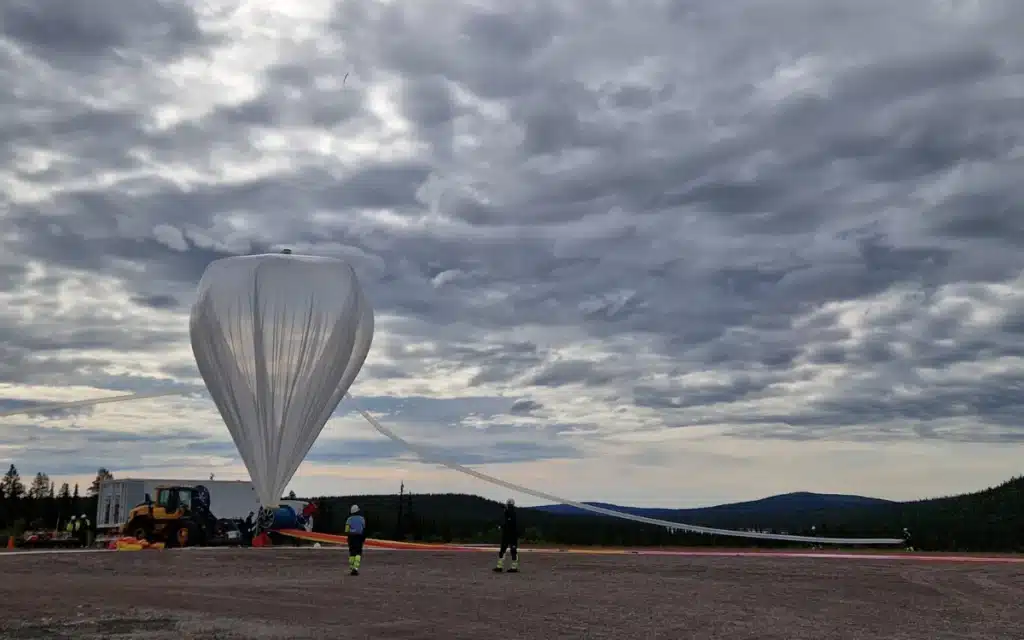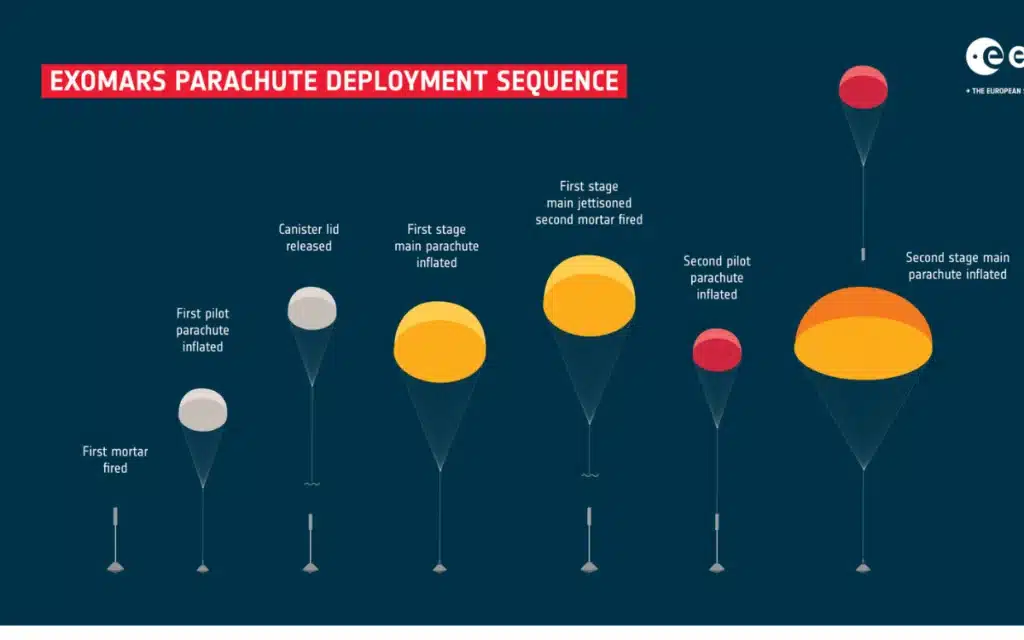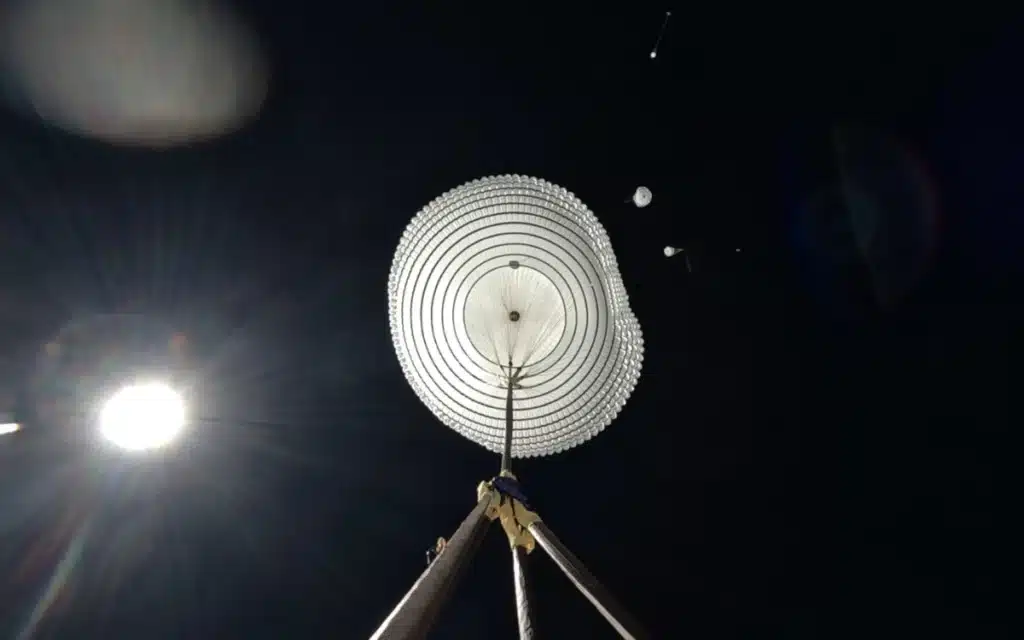The ExoMars team is making major strides in their mission to land a rover on Mars, revealing new test footage of the most complex parachute system ever designed.
This parachute system is crucial for slowing down the descent of the rover as it enters the Martian atmosphere at a blistering 13,000 mph.
Europe’s ExoMars program, led by the European Space Agency (ESA), aims to land the Rosalind Franklin rover on Mars by 2030, a feat that would mark the continent’s first successful rover landing on the Red Planet.
Getting there, however, means perfecting every detail of the mission’s intricate entry, descent, and landing system.
VISIT SBX CARS – View live supercar auctions powered by Supercar Blondie
The ExoMars program plans to reach Mars by 2030
The ESA conducted the parachute test earlier this month at the Esrange Space Center in Kiruna, northern Sweden.

Using a stratospheric helium balloon, the agency lifted a dummy descent module equipped with the new parachute system to an altitude of 19 miles.
This height mimicked the thin density of the Martian atmosphere, which is just one percent that of Earth, and allowed the ESA to simulate near-supersonic speeds.
After a 20-second freefall, both parachutes deployed exactly as planned, providing a confidence boost ahead of the rover’s future descent.
The Rosalind Franklin rover, named after the pioneering British chemist, will launch from Earth in 2028 aboard an American rocket, and is expected to arrive at Mars two years later.
The Mars rover’s mission is to search for signs of past or present life by drilling down 6.6 feet beneath the Martian surface.
This may not seem like much, but it’s deeper than any rover has gone before.
The ESA’s Mars rover plans bring it in line with other major space agencies worldwide.
NASA’s Curiosity Rover has been on Mars since 2012, and recently found samples that may prove that there existed on the red planet.
China is not far behind, with its Mars rover discovering a possible shoreline of an ancient ocean.
A complex two-parachute system
While the success of the parachute deployment is good news, landing the rover on Mars safely could be tricky.
It requires the spacecraft to decelerate from orbital speeds using a combination of aerodynamic drag, heat shields, parachutes, and retrorockets.
The parachute system at the heart of this challenge includes two main chutes.

The first is a three-stage, 49-foot wide parachute based on technology used in NASA’s Cassini-Huygens mission to Titan.
The second is a massive 115-foot wide parachute, which is the largest ever built for use beyond Earth.

It is constructed from 8,600 square feet of fabric and over 2.5 miles of cord.
ESA engineers are now reviewing the test data to confirm the parachutes will perform as needed in 2030.
If successful, this complex system could become a blueprint for future planetary landings.
In any case, while the ESA may not have the same name recognition as NASA, they have been working on a bunch of interesting projects.
They recently built a bug-eyed telescope to spot asteroids before they hit Earth, which may come in handy.
The ESA is also working on a hypersonic space plane, with plans to get it up in the air by 2031.
DISCOVER SBX CARS:
The global premium car auction platform powered by Supercar Blondie